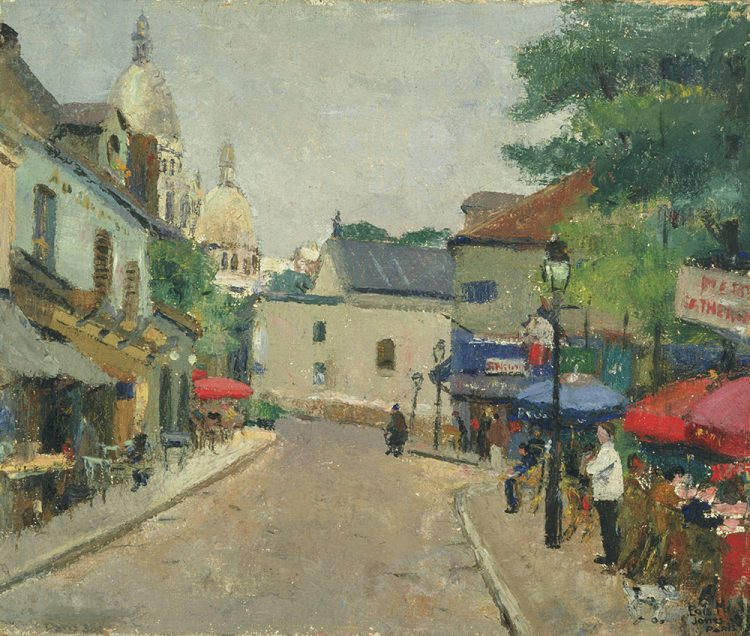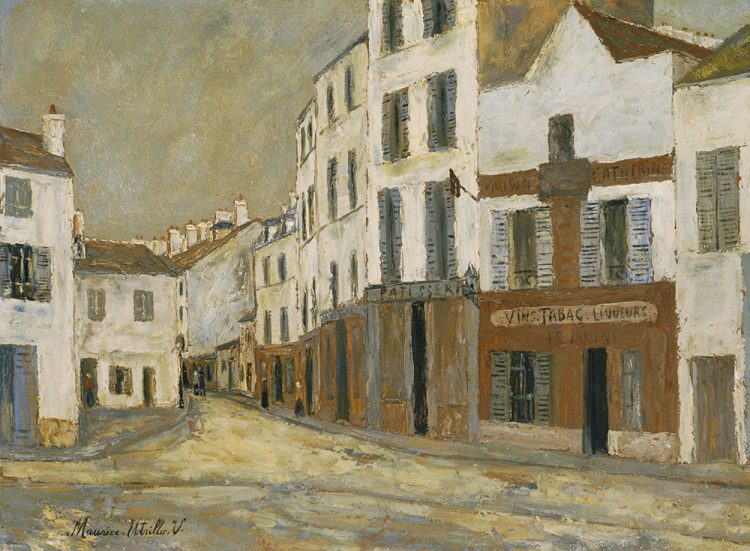While The Phillips Collection is closed, The Experiment Station will be sharing some of the great artwork featured in Riffs and Relations: African American Artists and the European Modernist Tradition, now on view through January 3, 2021.

Loïs Mailou Jones, Place du Tertre, 1938, Oil on canvas, 18 1/4 x 22 5/8 in., The Phillips Collection, Acquired 1944
During 1937–38, Loïs Mailou Jones (b. 1905, Boston, Massachusetts; d. 1998, Washington, DC), funded by a fellowship, took a sabbatical from teaching art at Howard University to study at the prestigious Académie Julian in Paris. There, she befriended Post-Impressionist painter Émile Bernard, who encouraged her work. As with Henry Ossawa Tanner and other African American artists before her, Jones exhibited at the Paris salons, specifically the Société des Artistes Français and the Société des Artistes Independants. Her training in Europe gave her a sense of freedom that was still unknown to her in Washington, DC, in the 1930s.
Jones painted in her studio and in the streets of Paris. Place du Tertre captures a popular square in the 18th arrondissement, only a few streets away from the hilltop church towers on Montmartre. She explained: “I would set up my [easel] on location. By 11 am I would have my scene, blocked in with a brush drawing. . . . Working as an impressionist I would sometimes have to return to the same spot several times. . . . I always had many spectators.” Museum Founder Duncan Phillips admired Jones’s modernist aesthetic. He acquired two paintings by the artist, which he exhibited at the museum and also lent to local institutions like the Howard University Gallery of Art and the Barnett Aden Gallery, the first black-owned commercial art space in the US.

Maurice Utrillo, Place du Tertre, 1911, Oil on cardboard, 21 3/8 x 28 7/8 in., The Phillips Collection, Acquired 1953
Growing up in the milieu of Edgar Degas, Pierre-Auguste Renoir, and Henri de Toulouse-Lautrec, Maurice Utrillo (b. 1883, Paris, France; d. 1955, Dax, France) took up painting to chronicle bohemian life and the urban landscape of Paris. In 1909–10, he began a series known as his White Period, which featured views of Gothic churches and street scenes derived from postcards. Over a sketch he used a palette knife and a brush to apply heavy layers of opaque paint on hard, thick cardboard.
By 1912, he had earned the admiration of avant-garde artists and had exhibited with Paul Cézanne, André Derain, Matisse, and Picasso. In 1926, Duncan Phillips took interest in Utrillo’s White Period pictures. Fond of this site, he acquired Utrillo’s impression of Place du Tertre for his museum, almost 10 years after he purchased Loïs Mailou Jones’s interpretation, which shows the same square from a different vantage point.
